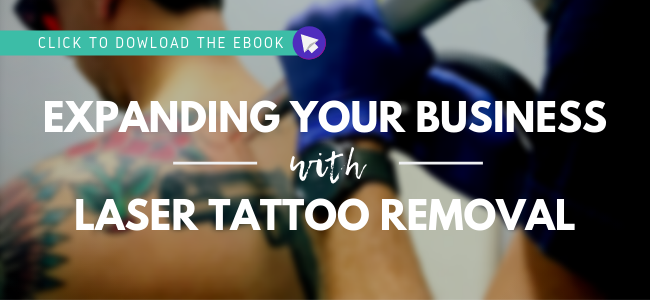From Pointless to Dangerous
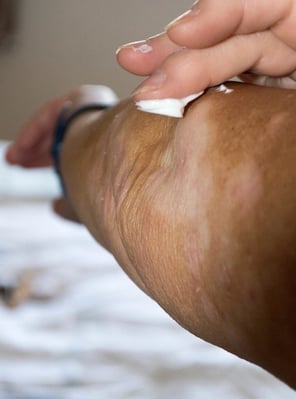 Anyone in the tattoo removal field should become familiar with “non-laser” approaches to tattoo removal.
Anyone in the tattoo removal field should become familiar with “non-laser” approaches to tattoo removal.
We’re not talking about surgical excision – which does undoubtedly work for removing tattoos when performed by an experienced plastic surgeon (but always leaves a scar and is costly). We’re talking about the “miracle” creams and injected solutions that are marketed as a low-cost alternative to laser tattoo removal.
It’s unfortunate that these scams are sold on the market today, as they mislead patients and don’t deliver on their promises. Their false advertising drives patients to waste time and money, and their products don’t provide results for ink removal. Yet, they are still sold to patients that are looking to erase their tattoo without the cost associated with laser treatments.
As a laser tattoo removal provider, it’s important to know the basics about these tattoo removal methods and how to respond to patients that ask questions about them.
This article explores the different tattoo removal alternatives that are marketed today and the science explaining why they are scams.
Tattoo Removal Creams
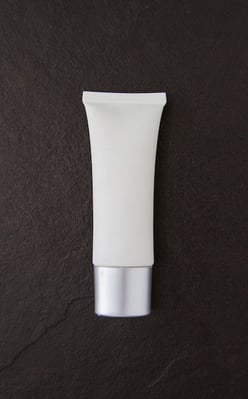 Tattoo removal creams, sold under various brand names, are a common scam sold online and in some retail stores, including Walmart. If you do a Google search for “tattoo removal,” you will likely see advertisements for various tattoo removal creams.
Tattoo removal creams, sold under various brand names, are a common scam sold online and in some retail stores, including Walmart. If you do a Google search for “tattoo removal,” you will likely see advertisements for various tattoo removal creams.
These creams or gels come in different “proprietary” formulations, often using TCA, hydroquinone, or various acids as the primary active ingredient. They promise that with repeated application, patients will see their tattoo gradually fade. The marketing typically shows convincing results photos despite being vague about how the cream actually works. Some are even sold as a kit with either multiple steps involved or an exfoliating brush.
Most tattoo removal cream products are sold for about $50 per bottle, which is much more affordable than a single session of laser tattoo removal.
What They Claim
- “3 Step suffusion microdermabrasion process”
- “fades black and colored inks”
- “formulated for all skin types”
- “a chemical serum penetrates deep into the ink-stained layers of skin, breaking up the ink at a cellular level”
- “supports the skin’s natural regeneration process, pushing the inked skin layers to the surface where they can be exfoliated”
- “special combination of natural ingredients such as aloe leaf juice, eucalyptus globules, orange peel, rosemary leaf and sage leaf”
- “incorporates a soothing agent, topical solution, and protective gel”
- “controlled inflammation is generated on the surface of the skin above the tattoo. This inflammation causes the pigment (ink) to naturally break apart and migrate to the surface with new skin growth.”

Why They Can’t Work
Tattoo removal ink is trapped in the dermal layer of skin. Any safe topical cream will not be able to penetrate through the epidermis into the dermis to reach the tattoo ink. If a topical substance was able to penetrate into the dermis and destroy the tattoo ink, it would cause indiscriminate damage to the surrounding skin tissue, resulting in scarring.
Tattoo removal creams aren’t notorious for causing scarring or damage to the skin – they’re known to simply not work.
One of the more popular tattoo removal creams that is no longer being sold was merely a repackaged bulk bleaching cream – low-concentrated hydroquinone.
Patient Reviews
- “I used this for about a year. I bought 2 boxes of this stuff and nothing, zilch, nada happened. My tattoo still looks brand new. I researched more into microdermabrasion and turns out that the process does NOTHING for tattoos. It simply doesn’t penetrate down into enough layers of skin to do anything. It’s regular dermabrasion not microdermabrasion that works. So I am out about $130 and a year of my life. The commercials are totally fake about how it works.”
- “Their salesperson told me that a 60 day package would eradicate my old, small, lightly colored tattoo. 6 months later, no progress. This product has not worked at all. Not even a little bit.”
“Non-Laser” Tattoo Removal
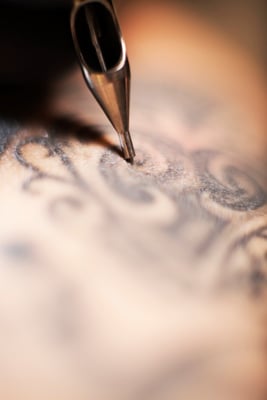 In many markets across the US and abroad, you can find businesses advertising “non-laser” tattoo removal.
In many markets across the US and abroad, you can find businesses advertising “non-laser” tattoo removal.
For tattoo shops and permanent makeup artists that regularly encounter patients with tattoo regret, many want to offer a removal solution to their clients.
The problem is that professional lasers for tattoo removal require a capital equipment investment, which is a barrier to entry for many businesses. For this reason, “alternative”methods for tattoo removal are promoted to tattoo shops and permanent makeup artists as a way to add additional revenue.
If the main obstacle for tattoo removal creams is penetrating through the epidermis into the dermis – why not use a tattoo machine to puncture the skin? That’s the concept behind “non-laser” tattoo removal, which combines the tattooing process with a proprietary liquid or gel that promises to lift tattoo ink out of the dermis.
During the procedure, the provider typically numbs the skin with lidocaine cream, perforates the unwanted tattoo with a tattoo needle, and applies the formula to the tattoo for a set amount of time. Some variant methods inject the solution directly into the tattoo rather than applying it topically over the broken skin. Regardless of the application method, the treated area will form a scab after the procedure. Once the scab falls off after a few weeks, it is supposed to reveal faded ink beneath.
Non-laser tattoo removal methods claim that patients will see complete results in 4 or fewer sessions. Prices per treatment vary depending on the size of the tattoo, but often cost about $100 and last about 30 – 45 minutes.
What They Claim
- “specially-formulated solution bonds with the original tattoo and then draws the ink to the skin’s surface”
- “an innovative proven technique for removing tattoo pigment that works with the body’s natural healing process to form a scab containing the pigment, which then drops off, revealing the eliminated pigment underneath the scab”
- “also contains the scar-inhibiting product… which helps to minimize or prevent scarring”
- “is less painful, more cost-effective as it requires up to 75% fewer treatments for complete removal”
- “implanted into tissue the same way tattoo inks and permanent makeup pigments are implanted in tissue using a tattoo or permanent make-up machine”
- “highly respected and known world-wide to be the number one tattoo and permanent cosmetic removal system”
- “non-toxic and completely removes the ink through the skin externally and not throughout the body”
Why They Can’t Work
Here’s one of the patents for a non-laser tattoo removal procedure. You can see that the main ingredients are: sea salt, purified water, aloe barbadensis (aloe vera) extract, lidocaine hydrochloride (an anesthetic), and hydroxyethylcellulose (a thickening agent). There also are small amounts of essential oils and extracts.
Because the procedure involves opening the skin with the tattoo needle and applying the solution, the method is simply applying salt to a wound. It is painful for patients, and comparable to salabrasion, an out-dated technique that is widely known to cause permanent scarring to the skin.
Other solutions have ingredients such as zinc oxide, magnesium oxide, calcium oxide, isopropanol, triethanolamine, and benzoic acid.
If patients see fading from these methods, it is primarily due to a immune response to the trauma inflicted on the skin. Considering that there are many ways to inflict trauma on the skin and illicit an immune response, the non-laser tattoo removal approach is comparable in effectiveness to abrading the skin with sandpaper, injecting acid into the skin, or any other aggressive method.
There may be some ink fading or removal from the scabs that form, but because the trauma is inflicted to all of the skin’s tissue – not solely targeted to the ink – scarring and skin texture change are to be expected.
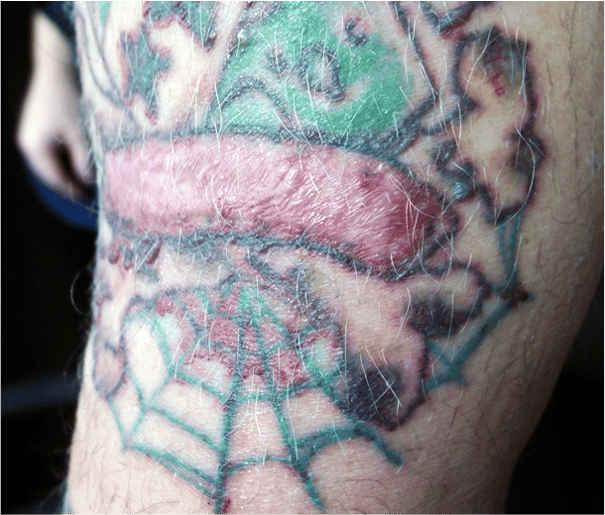
In all of the cases that we’ve seen of patients that have previously been treated with non-laser tattoo removal, their skin was raised and thickened as a result. The sad reality is that scar tissue forms in the dermis around the remaining ink, making it more difficult to remove pigment in the future, even with proper equipment.
For further reading, here is a published scholarly article in Dermatologic Surgery about scarring from non-laser tattoo removal: https://onlinelibrary.wiley.com/doi/10.1111/j.1524-4725.2008.34332.x/abstract
Patient Reviews
- “They said it would be gone in 1-3 sessions and it was not. It was very painful, they go into your skin with a tattoo needle every session, and I was left with scarring identical to my tattoo even after the extent I took to take care of it after the treatments. I have a permanent scar where my tattoo should be removed.”
- “And in the little amount of ink it did pull off, it pulled it off in “chunks”, like all of it was there one minute and then nothing was there the next minute. It didn’t fade it at all like it says it does, and the way it was coming off like this was concerning. It even left a scar.”
- “Worst experience ever. Not only is it extremely painful but I have horrible scarring two years later. Their before and afters are photo shopped and these people are con-artists.”
- “I (like we all did) paid a lot of money to be left with this horrible scar and half a tattoo. The tattooist who did the procedure didn’t stick with it for long. When I went in about it some time after to complain, they shrugged their shoulders and said that it had been nothing but problematic for them – hence they stopped offering it.”
Q-switched Lasers Work Differently
Laser tattoo removal works through selective photothermolysis, which means only the tattoo pigment in the skin is targeted and destroyed during a laser treatment.
Q-switched laser light is able to easily pass through the epidermis and into the dermis where tattoo ink particles are trapped. This means that, unlike creams that cannot safely penetrate through the epidermis, laser light is able to reach deep into the skin to where the tattoo ink is trapped. Also, unlike the “non-laser” tattoo removal methods, laser tattoo removal primarily targets just the ink, leaving the surrounding skin tissue unharmed.
Because the skin tissue is not damaged by the laser’s energy, typically there are no permanent side effects from laser tattoo removal treatments when proper protocols and aftercare are followed.
There have been countless medical studies on the effectiveness of Q-switched lasers for tattoo removal – it truly is the gold standard worldwide for returning inked skin to its natural appearance without scarring.

